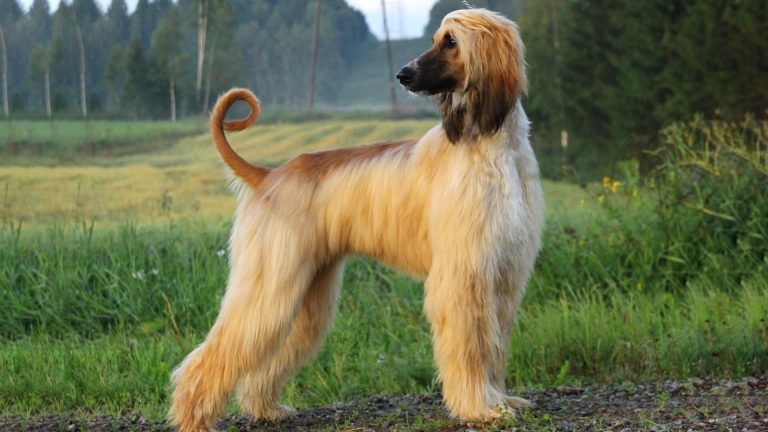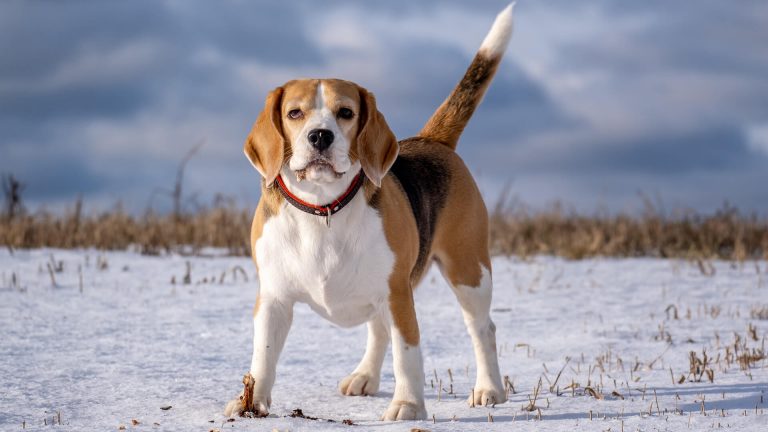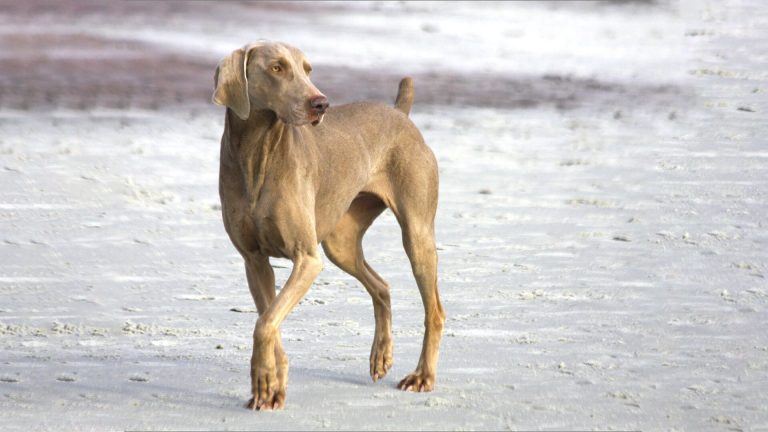The Belgian Malinois is a breed of dog that originated in Belgium. It is a member of the Belgian Shepherd dog breed and is similar in appearance to the German Shepherd. The Belgian Malinois was originally bred as a working dog, specifically for herding and guarding livestock. They are intelligent, energetic, and highly trainable, and are often used as service dogs, search and rescue dogs, and police dogs. The breed is known for its loyalty, intelligence, and athleticism, and is prized for its ability to learn and perform complex tasks.
Distinctive Features of Belgian Malinois
| Scientific Name | Canis lupus familiaris |
| Lifespan | Up to 14 years |
| Color | Fawn with black mask |
| Size in inches | Up to 26 inches at shoulder |
| Weight | 55-80 pounds (males larger than females) |
| Unique trait | Double coat |
| Famous for | Working dog (service, search and rescue, police) |
| Temperament | Intelligent, energetic, loyal |
| Maintenance | Moderate |
| Adaptability | High |
| Behavior | Can be protective, but may be better suited for families with older children |
| Social | Gets along well with other pets if raised together and well-trained and socialized |
The Belgian Malinois is a medium to large breed of dog, with a distinctive appearance characterized by its short, fawn-colored coat and black mask. The breed has a strong, athletic build, with a muscular and square-proportioned body, a long neck, and a wedge-shaped head. Belgian Malinois have a double coat, with a short, thick outer layer and a soft, dense undercoat.
The breed is known for its high energy level and need for regular exercise, and is well-suited for activities such as obedience, tracking, and agility. Belgian Malinois are intelligent and highly trainable, and are often used as service dogs, search and rescue dogs, and police dogs.
The average lifespan of a Belgian Malinois is 12 to 14 years. Males typically weigh between 55 and 80 pounds, while females weigh between 40 and 60 pounds. They stand 24 to 26 inches tall at the shoulder.
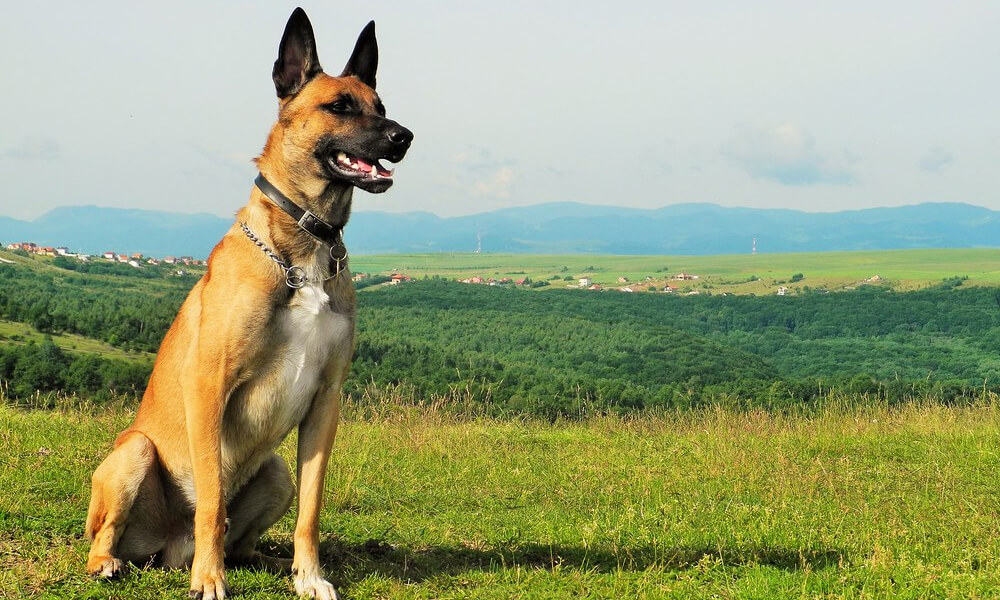
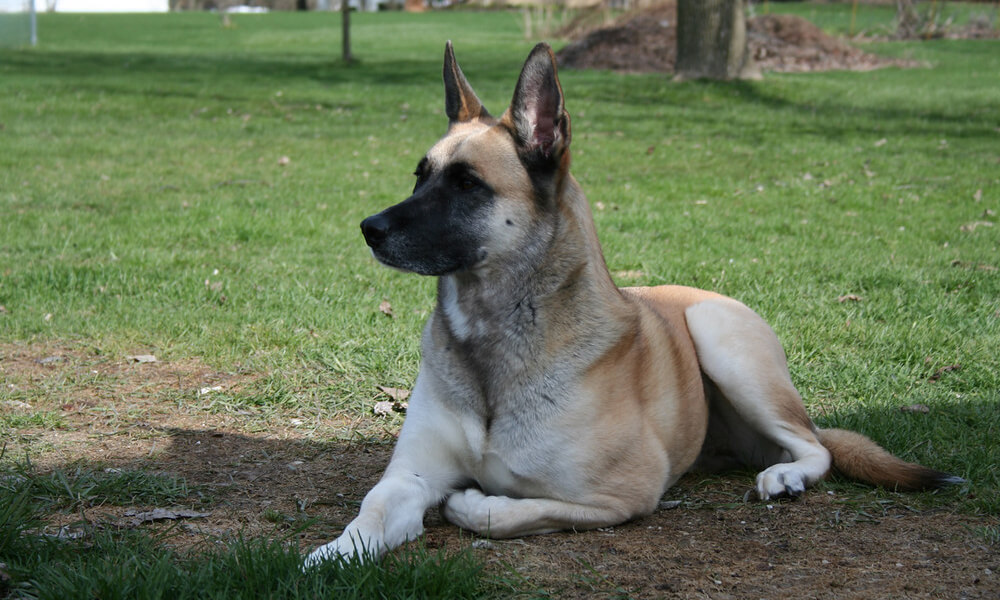
How to Take Care of Your Pet Belgian Malinois?
Taking care of a Belgian Malinois requires commitment, time, and attention to their physical and mental well-being. Here are some key aspects to consider when caring for a Belgian Malinois:
How to Set Up Habitat for a Pet Belgian Malinois?
It is important to provide a suitable habitat for a Belgian Malinois to ensure its physical and emotional well-being. Here are some tips for setting up a habitat for a pet Belgian Malinois:
- Provide plenty of space: Belgian Malinois are energetic and active dogs that need plenty of space to run and play. Make sure that you have a large yard or access to a park or other open area where your dog can get the exercise it needs.
- Set up a secure fencing: Belgian Malinois are intelligent and can be escape artists, so it is important to have a secure fence to keep your dog contained. Choose a fence that is tall enough and sturdy enough to prevent your dog from climbing or jumping over it.
- Provide a suitable shelter: Belgian Malinois need a place to escape the elements and rest. Set up a secure, weather-proof dog house in a shady, sheltered area of your yard.
- Offer plenty of water: Belgian Malinois need plenty of water to stay hydrated, especially during hot weather. Make sure to always have a clean, fresh supply of water available for your dog.
- Provide toys and play equipment: Belgian Malinois are intelligent and need mental and physical stimulation. Provide toys and play equipment, such as balls and chew toys, to keep your dog entertained and engaged.
What to Feed Your Pet Belgian Malinois?
It is important to feed a high-quality diet to your pet Belgian Malinois to ensure that it gets all the nutrients it needs to stay healthy. Here are some guidelines for feeding a pet Belgian Malinois:
- Choose a high-quality diet: Look for a commercial dog food that is formulated for the specific nutritional needs of Belgian Malinois. Choose a diet that is made with high-quality ingredients and is appropriate for the age and activity level of your dog.
- Follow feeding recommendations: Follow the feeding recommendations on the back of the dog food bag or consult with a veterinarian to determine how much to feed your dog. Keep in mind that Belgian Malinois are active dogs and may need more food than a less active breed.
- Offer a balanced diet: A balanced diet for a Belgian Malinois should include a source of protein, such as meat, poultry, or fish, as well as carbohydrates, vegetables, and fruits. Avoid feeding your dog a diet that is high in fat or that contains unhealthy ingredients, such as artificial preservatives and additives.
- Consider your dog's individual needs: Every dog is different, and your Belgian Malinois may have specific nutritional needs based on its age, size, and activity level. Consult with a veterinarian to determine the best diet for your individual dog.
What to Avoid Feeding Your Pet Belgian Malinois?
There are certain foods that can be harmful or toxic to a pet Belgian Malinois, and it is important to avoid feeding these foods to your dog. Here are some common human foods that should be avoided:
- Chocolate: Chocolate contains a substance called theobromine, which can be toxic to dogs. Even small amounts of chocolate can cause vomiting, diarrhea, and tremors in dogs.
- Grapes and raisins: Grapes and raisins can cause kidney failure in dogs, even in small amounts. Symptoms of grape or raisin toxicity may include vomiting, diarrhea, and lethargy.
- Onions and garlic: Onions and garlic contain compounds that can damage a dog's red blood cells and lead to anemia. Symptoms of onion or garlic toxicity may include vomiting, diarrhea, and weakness.
- Alcohol: Alcohol can be very harmful to dogs and can cause vomiting, diarrhea, difficulty breathing, coma, and even death.
- Avocado: Avocado contains Persin, which can cause vomiting and diarrhea in dogs.
- Cherry: Cherries should be avoided for Belgian Malinois as they contain pits that pose a choking hazard and can cause intestinal blockage or cyanide poisoning if ingested in large quantities.
- Bacon: Bacon should be avoided for Belgian Malinois as it is high in fat and salt content, which can lead to pancreatitis, obesity, and other health issues in dogs.
- Ice cream: Ice cream is toxic to Belgian Malinois, as it can cause an upset stomach and even diarrhea sometimes.
Brushing, Bathing & Grooming Needs of Pet Belgian Malinois
Belgian Malinois have a thick, double coat that requires regular grooming to maintain its health and appearance. Here are some guidelines for brushing, bathing, and grooming a pet Belgian Malinois:
- Brush your dog regularly: Belgian Malinois should be brushed at least once a week to remove loose hair and prevent matting. Use a slicker brush or a comb specifically designed for dogs with a double coat.
- Bathe your dog as needed: Belgian Malinois generally only need to be bathed every few months, or as needed if they get dirty or develop an odor. Use a mild dog shampoo and make sure to rinse thoroughly to prevent skin irritation.
- Trim your dog's nails: Belgian Malinois' nails should be trimmed every few weeks to prevent them from getting too long. If you are not comfortable trimming your dog's nails, have a veterinarian or groomer do it for you.
- Brush your dog's teeth: Belgian Malinois should have their teeth brushed at least once a week to prevent dental problems. Use a toothbrush and toothpaste specifically designed for dogs, and be gentle to avoid damaging the gums.
- Check your dog's ears: Belgian Malinois are prone to ear infections, so it is important to check their ears regularly and clean them as needed. Use a cotton ball or a soft cloth to gently clean the inside of the ear, taking care not to insert anything into the ear canal.
By following these grooming guidelines, you can help ensure that your pet Belgian Malinois has a healthy, well-groomed appearance.
Other Pets to Keep or Avoid with Belgian Malinois
Belgian Malinois are intelligent and social dogs that can get along well with other pets, especially if they are raised together. However, it is important to consider the temperament of both the Belgian Malinois and any other pets you may have, and to introduce them gradually and under close supervision to ensure that they get along.
Belgian Malinois may be more likely to get along with other pets if they are well-trained and socialized, so it is important to work on obedience and socialization training with your dog.
If you are considering adding a new pet to your household, it is a good idea to do some research on the temperament and needs of the breed and to consult with a veterinarian or a professional trainer to ensure that the new pet will be a good fit for your household.
Health Concerns of Pet Belgian Malinois
Like all breeds, Belgian Malinois can be prone to certain health concerns. Here are some common health issues to be aware of in a pet Belgian Malinois:
- Hip and elbow dysplasia: This is a genetic condition that causes the hip or elbow joint to develop abnormally, leading to pain and lameness. It can be diagnosed through X-rays and is typically treated with medication and/or surgery.
- Eye problems: Belgian Malinois are prone to a variety of eye problems, including cataracts, progressive retinal atrophy, and corneal dystrophy. These conditions can lead to vision loss and may require treatment, such as surgery.
- Skin allergies: Belgian Malinois can be prone to allergies that manifest as skin irritation, redness, and itching. Allergies can be triggered by a variety of factors, including certain foods, environmental irritants, and fleas.
- Thyroid problems: Belgian Malinois can develop thyroid problems, such as hypothyroidism, which is a deficiency of thyroid hormone. This can lead to weight gain, hair loss, and other symptoms and is usually treated with medication.
- Bloat: This is a serious and potentially life-threatening condition in which the stomach becomes distended and twisted, cutting off blood flow to the rest of the body. Belgian Malinois are at an increased risk of bloat, and it is important to seek immediate veterinary care if your dog shows symptoms such as abdominal swelling, restlessness, and difficulty breathing.
- Undeveloped or retained testicles (Cryptorchidism): Belgian Malinois may experience cryptorchidism, a condition where one or both testicles fail to descend properly. Surgical intervention is often required to prevent complications and reduce the risk of certain health issues.
- Autoimmune disorders: Belgian Malinois can be prone to autoimmune disorders, such as autoimmune thyroiditis and immune-mediated hemolytic anemia, where the immune system attacks the body's own cells or tissues. Regular veterinary care is essential for monitoring and managing these conditions.
- Cancer: Belgian Malinois can be susceptible to various types of cancer, including hemangiosarcoma, lymphoma, and osteosarcoma. Regular veterinary check-ups and early detection are important for effective treatment and management.
- Progressive Retinal Atrophy (PRA): Belgian Malinois are susceptible to progressive retinal atrophy (PRA), a degenerative eye condition that leads to vision loss. Regular eye examinations can help detect and manage this condition.
- Retinal dysplasia: Belgian Malinois are susceptible to retinal dysplasia, an inherited eye condition that can lead to vision problems. Regular eye exams by a veterinary ophthalmologist can help detect and manage this condition.
- Hypothyroidism: Belgian Malinois can be affected by hypothyroidism, a condition where the thyroid gland doesn't produce enough hormones. It can lead to weight gain, lethargy, skin problems, and requires lifelong medication management.
By being aware of these health concerns and taking preventive measures, such as regular veterinary check-ups and a healthy diet, you can help ensure the well-being of your pet Belgian Malinois.
Training and Playing with Your Pet Belgian Malinois
Belgian Malinois are intelligent, energetic, and highly trainable dogs that thrive on mental and physical stimulation. Here are some tips for training and playing with a pet Belgian Malinois:
- Start training early: Belgian Malinois are intelligent and learn quickly, so it is important to start training as early as possible. Use positive reinforcement techniques, such as rewards and praise, to encourage your dog to learn new commands and behaviors.
- Provide mental stimulation: Belgian Malinois need plenty of mental stimulation to keep them engaged and prevent boredom. Offer toys that challenge your dog's mind, such as puzzle toys and interactive toys, and consider enrolling your dog in obedience or agility classes.
- Exercise your dog regularly: Belgian Malinois are active dogs that need plenty of exercise to stay healthy and happy. Take your dog for daily walks or runs, and consider incorporating activities such as fetch, swimming, or agility training into your routine.
- Play with your dog: In addition to exercise, Belgian Malinois also enjoy playtime with their owners. Offer toys such as balls, frisbees, and chew toys, and play games such as fetch or tug-of-war to keep your dog entertained and engaged.
Provide plenty of mental and physical stimulation and training and playing to your pet Belgian Malinois regularly, so you can help ensure that your dog stays happy and well-behaved.
Facts About Belgian Malinois
- The Belgian Malinois is a breed of dog that originated in Belgium and is a member of the Belgian Shepherd dog breed.
- Belgian Malinois are often confused with German Shepherds, but they are a separate breed with their own distinctive characteristics.
- Belgian Malinois were originally bred as working dogs for herding and guarding livestock.
- The breed is known for its intelligence, loyalty, and athleticism and is often used as service dogs, search and rescue dogs, and police dogs.
- Belgian Malinois have a short, fawn-colored coat and a black mask and have a strong, athletic build.
- Belgian Malinois are energetic and need plenty of exercise and mental stimulation to stay happy and healthy.
What It's Like to Keep a Belgian Malinois as a Pet?
Belgian Malinois are intelligent, energetic, and highly trainable dogs that can make great pets for the right owner. They are loyal and affectionate with their families and are known for their strong bond with their owners.
However, Belgian Malinois are also high-energy dogs that require plenty of exercise and mental stimulation to stay happy and healthy. They need a lot of space to run and play and may become destructive if they do not get enough exercise.
Belgian Malinois are also intelligent and need a lot of mental stimulation to keep them engaged. They are quick learners and enjoy training and learning new things, so it is important to provide plenty of opportunities for them to learn and engage their minds.
Belgian Malinois can make great pets for active families who are willing to invest the time and energy into training and exercising them. They are intelligent, loyal, and affectionate dogs that can be very rewarding to own.
Frequently Asked Questions About Belgian Malinois
Here are some frequently asked questions about Belgian Malinois:
Are Belgian Malinois good family dogs?
Belgian Malinois can be good family dogs if they are well-trained and socialized. They are intelligent and loyal and can form strong bonds with their owners. However, they are high-energy dogs that need a lot of exercise and mental stimulation, and may not be well-suited for families who are not able to provide this. Belgian Malinois can also be protective of their families, which can be a positive trait if trained and managed properly, but may not be suitable for families with young children.
Are Belgian Malinois good with other pets?
Belgian Malinois can get along well with other pets, especially if they are raised together and well-trained and socialized. However, it is important to introduce any new pets gradually and under close supervision to ensure that they get along. Belgian Malinois may be more likely to get along with other pets if they are well-trained and socialized, so it is important to work on obedience and socialization training with your dog.
Do Belgian Malinois shed a lot?
Belgian Malinois have a thick, double coat that sheds year-round, although they may shed more heavily at certain times of the year. They require regular brushing to remove loose hair and prevent matting, and may shed more if they are not brushed regularly.
How much exercise do Belgian Malinois need?
Belgian Malinois are high-energy dogs that need plenty of exercise to stay healthy and happy. They should be taken for daily walks or runs, and should have access to a large yard or park where they can run and play. Incorporating activities such as fetch, swimming, or agility training into their routine can also provide mental and physical stimulation.
What is the lifespan of a Belgian Malinois?
The average lifespan of a Belgian Malinois is 12 to 14 years. Factors that can influence a Belgian Malinois' lifespan include genetics, diet, exercise, and overall health.

